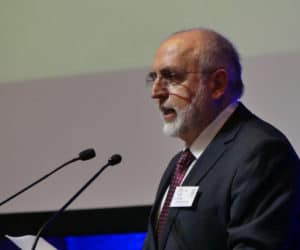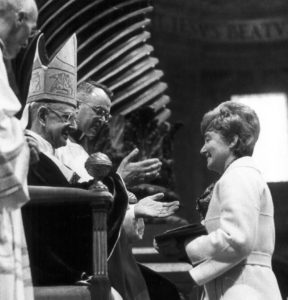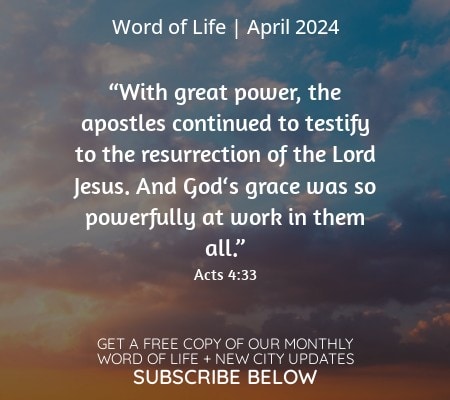Charisms are spiritual gifts, new understandings of the faith, given by the Holy Spirit for the good of the whole Church and humanity. They can survive for centuries, and according to Focolare Co-President and theologian Jesús Moran, the process of continually reworking them for changing times often starts immediately after the death of the founder.

Ten years after Chiara Lubich’s passing, Moran has spoken on various occasions about the need to update the way the Focolare charism of unity is currently put into practice. He also spoke about the tension between being creative in making the charism relevant in current times, while at the same time being faithful to the original genuine inspiration of Chiara Lubich.
These reflections are not only for communities belonging to Catholic and other Christian churches, but relevant and useful also for every group with a specific mission or goal.
“The great challenge continually facing a charism is to be ‘creatively faithful,’ or to be ‘faithfully creative,’ because the two things go together,” he says. “Only by being creative can you be faithful, and you are only faithful creatively.”
Since the beginning of Christianity
Moran, a theologian and philosopher, explains this process as “contemporizing” the charism, which he says is analogous to what happens with the Gospels. What we know about the life of Jesus; his words, his gestures and his actions have been written down in four versions — the four Gospels — plus St. Paul’s letters and the Apostolic Letters. There were other apocryphal texts that were not chosen to be included in the Bible because they are not consistent with each other.
However, even the consistent texts that the Church defined to be part of the Gospels are most likely not really the words that Jesus spoke. The events did not happen exactly as written down in the Bible.

Here too, says Moran, there was a transmitting process: “What happened is that the Holy Spirit guided a re-reading of what had been lived by those who were there in such a way that they expressed it in the way they did. That is, all they lived, heard and touched — because John says this, referring to the Resurrection — ‘what we have seen and touched’ (see 1 Jn 1:1) — became contemporary in the mind of the Apostles through the action of the Holy Spirit, but also through their own intelligence and their own historical situation.”
This explains why we do not say “The Gospel of Jesus” but “The Gospel of Jesus Christ according to” Matthew, or Luke, or Mark or John.
versions — the four Gospels — plus St. Paul’s letters and the Apostolic Letters. There were other apocryphal texts that were not chosen to be included in the Bible because they are not consistent with each other.
However, even the consistent texts that the Church defined to be part of the Gospels are most likely not really the words that Jesus spoke. The events did not happen exactly as written down in the Bible.
Here too, says Moran, there was a transmitting process: “What happened is that the Holy Spirit guided a re-reading of what had been lived by those who were there in such a way that they expressed it in the way they did. That is, all they lived, heard and touched — because John says this, referring to the Resurrection — ‘what we have seen and touched’ (see 1 Jn 1:1) — became contemporary in the mind of the Apostles through the action of the Holy Spirit, but also through their own intelligence and their own historical situation.”
This explains why we do not say “The Gospel of Jesus” but “The Gospel of Jesus Christ according to” Matthew, or Luke, or Mark or John.
We have to take into consideration that each of the evangelists had a specific background. For example, Moran explains, “Matthew is an individual person, a historical person living in a Jewish context with a Jewish mentality. Thus the Holy Spirit brought about this contemporizing effect on what he had seen, which is the same as what the others saw, and led him to express himself as he did.”
Moran summarizes the causes of this adaptation process as follows: “a social issue, something urgent and challenging; human intelligence; the historical situation people are in; and, in the case of a charism, the Holy Spirit.”
Then there’s always the danger of confusing the gifts of God with our personal achievements, allowing pride or spiritual arrogance to enter in. So in the process of adapting, there is often a crisis “when one realizes the huge distance between the gift of God and ourselves …
Without the dazzling light that comes from the founder, we discover who we are, and so we feel totally inadequate,” he said.
But what we call “contemporizing” is much more than making something contemporary. Updating is one part of contemporizing, but it is more a re-understanding of something that already exists, more like expressing things that were already there and had not yet come to light.
“Obviously, the Apostles had not previously understood the things they wrote about Jesus, but they were in Jesus. In fact, [John the Baptist] said, ‘Another will come after me who will make all things clear’ (see Mk 1:6–8, Jn 14:26). This is contemporizing!
“Therefore contemporizing means better understanding something that is already understood — and this is one side of it, to understand something better than we did before — but also actually to express what has not been expressed, up to now.”
Contemporizing charisms today
Focolare’s co-president gives an example of how the Focolare should do this: “To contemporize the charism [of unity] today, of course, we have to turn to Chiara Lubich’s writings. But it’s not enough to repeat them word for word, as they are; that’s not enough. The constant and never-ending challenge is for those texts to draw us into living the very experience they describe.”
This is a challenge that the older charisms — like the Franciscans, Dominicans or Jesuits, for example — have had to face for centuries. Franciscans still have to discover what being poor means today. Jesuits have to define their specific mission in today’s world, as do other religious orders and movements.
Moran remembers how, already during Chiara Lubich’s life, the founder reworked the charism herself, understanding more what it meant to live for unity.

“When in the 1950s Chiara was asked: ‘Is this movement of unity also made for ecumenism?’ Chiara replied, ‘No, we have nothing to do with ecumenism!’ Later, in England and in Germany, she met people from different churches for the first time who were touched by the charism, and only then did she understand that unity was made for these people too, that her charism did have an ecumenical dimension.
“So something that was already within the charism was adapted and came to light. This is contemporizing. She understood it was coherent with the charism as a whole.”
This process is not an easy one, and it isn’t always obvious which way is the right one to go: “We may feel a bit bewildered sometimes,” says Moran, “Sometimes we lack strength. But looking at it from the point of view of contemporizing, we realize how fascinating it all is. We are faced with this great challenge of adapting, which means incarnating, going deeper, expressing the unspoken, all of which is full of possibilities.”
Maintaining our identity
Questions undoubtedly emerge, “With all this trying to newly understand the charism for today’s world, don’t we risk losing our own identity?” Where will we end up if we rework it all the time? Perhaps we’ll end up somewhere else altogether, doing something good but not quite an expression of the charism of unity?
Moran summarizes these questions as follows: “How can something — in this case a charism — continue to be itself while continually being modernized, pulled this way and that by all the very real social, ecclesial and cultural circumstances which require a response?”
He underlines that an identity is not something fixed, but dynamic. Just as an individual’s personality is continually formed until the end of his or her life, a charism also develops — no one could really claim to know definitively what the Focolare is. This is so for all other movements or communities in the Catholic Church. Moran quotes scholars who state that “the history of Christian Tradition, anchored in Revelation, is Christ who continually defines himself, right from the early centuries.”
There are two approaches to this, Moran explains. “Someone may say, ‘I have this identity, and I’m keeping it, maintaining it.’ This is one approach: ‘We have this identity, and we’re going to preserve it.’ This is a conservative understanding of identity.”
However, that is not a view he shares. “I think we maintain an identity by adapting. Because if it doesn’t contemporize, it dies. It would be as if a mother never let her child go out or do anything because she wants to keep only the child she sees and knows, and so that child doesn’t develop.
“A fixed identity is, paradoxically, a weak identity. The ability to adapt is a sign of a strong identity. So the greater the ability to contemporize a charism, the stronger the charism is.”
As big of a challenge as that is, Moran says that this evolution from the period when the founder is alive (charismatic foundation) to the subsequent period of updating the charism (historical foundation) is a normal and much-needed process.
Ten years after Chiara Lubich left for heaven, this is exactly what the Focolare is trying to do. It takes courage, risk taking and trust to be both faithful to the first inspirations, while finding new and creative ways of putting them into practice.




